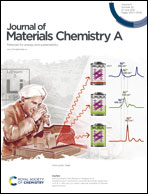Advances in noble metal (Ru, Rh, and Ir) doping for boosting water splitting electrocatalysis
Abstract
Electrochemical water splitting has a promising future in producing high-density and green hydrogen, however, the sluggish H2O dissociation process, due to the low H2O adsorption on the catalyst surface, greatly hinders the industrial electrochemical water splitting on a large scale. Therefore, intensive efforts have been devoted to the exploration of efficient approaches for fabricating highly efficient electrocatalysts with appropriate H2O adsorption, such as defect engineering, interface engineering, and morphology design. Among them, metal doping, particularly noble metal (Ru, Rh, and Ir) doping, is essential to optimize the adsorption of reaction intermediates on the surface of catalysts, and has thus attracted increasing research interest. In order to uncover the significant role of noble metal doping in boosting water splitting electrocatalysis, this minireview showcases the most recent examples towards this endeavor, and begins by illustrating the mechanisms for water splitting and several advanced approaches for realizing noble metal doping. In the main text, we have also specifically highlighted the influences of noble metal doping on the electrocatalytic performance. Finally, some challenges and future outlooks are also presented to offer guidance for practical applications.

- This article is part of the themed collection: Journal of Materials Chemistry A Recent Review Articles


 Please wait while we load your content...
Please wait while we load your content...